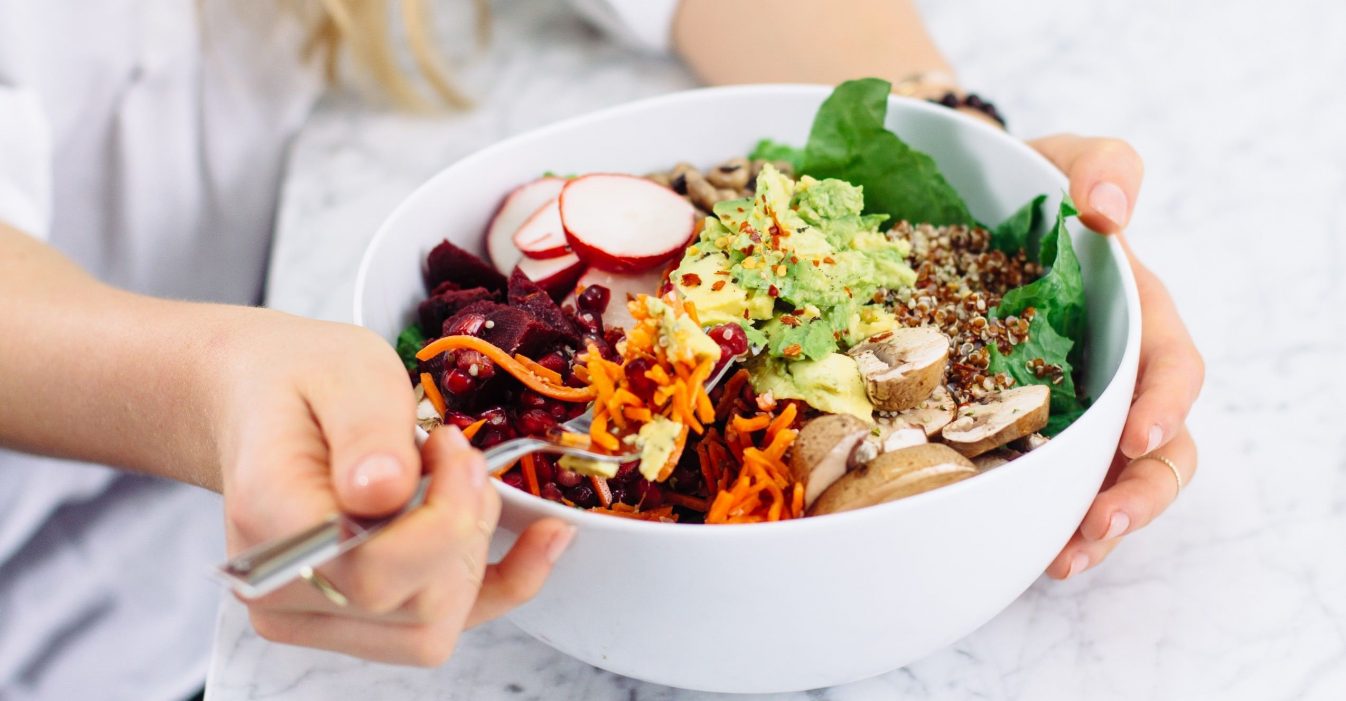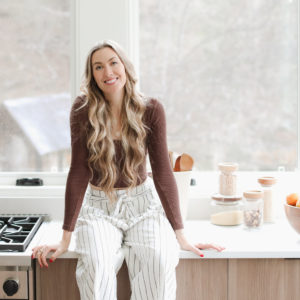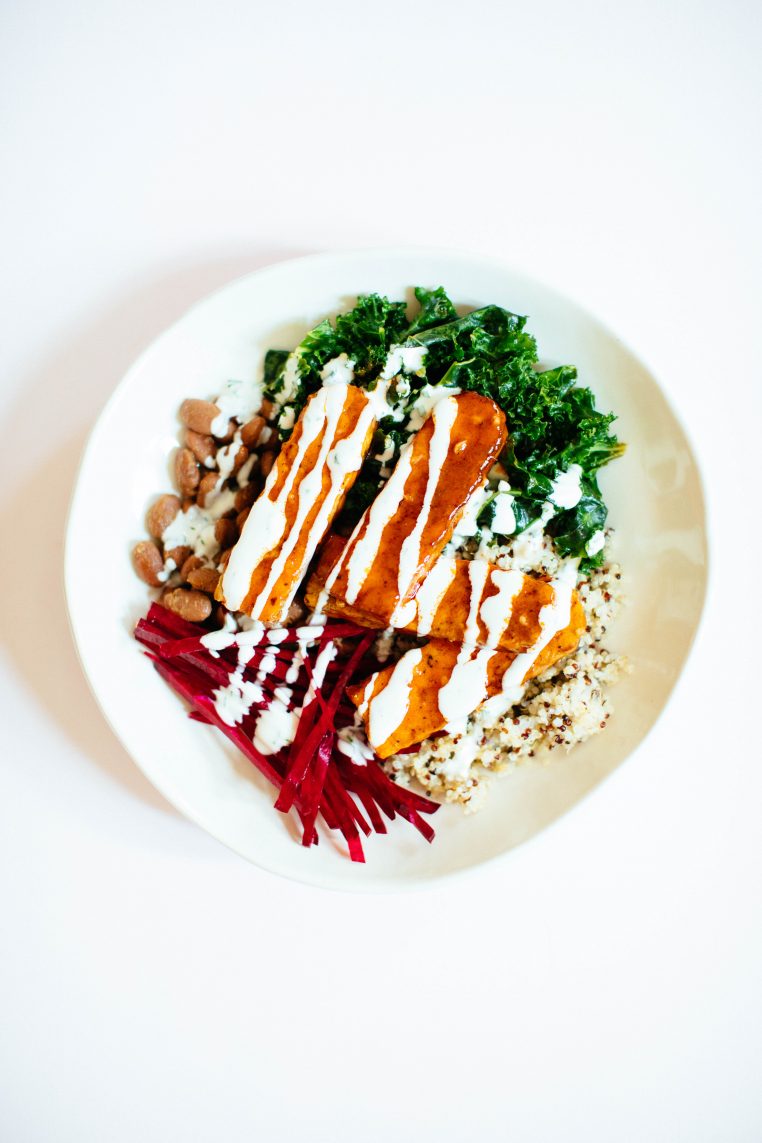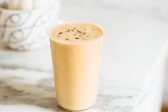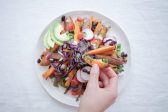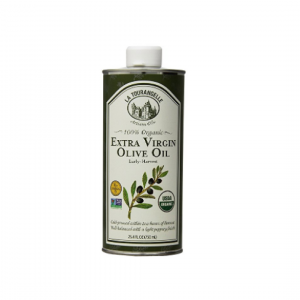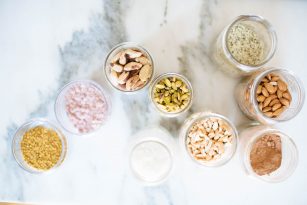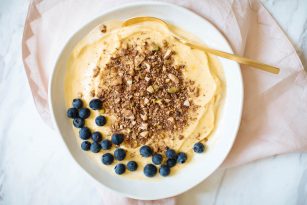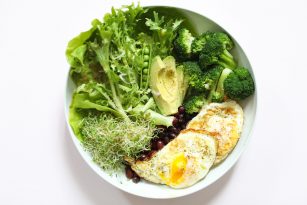Your new go-to guide for beautifully balanced bowl recipes, filled with nutrient-dense vegetables, fruits, carbohydrates, fats, and quality proteins.
I’m so excited to share with you one of my favorite meals that I’ve been eating for years. I’ve finally come up with the perfect way to describe it—the nourish bowl! When I first shared one of my nourish bowls on Instagram, it became one of my most popular posts. And for good reason, too! Bowl recipes are so easy and convenient.
Our nourish bowls here at Nutrition Stripped are rooted in our tried-and-true Foundational Five Framework. This ensures you get a delicious, nutrient-dense, satiating meal every time. Plus, you never have to have the same combination twice. There’s so much room for flexibility!
Without fail, this is one of the staple recipes I eat at least once a day. So let’s get into what makes up this nourish bowl, and how you can use this guide to make delicious Foundational Five bowl recipes daily.
Using The Foundational Five To Create Nourish Bowls
In case you’re new to the NS Community and the Mindful Nutrition Method, the Foundational Five system is part of how we teach you to build balanced meals. It makes it easy for you to give your body the nourishment you need while having the flexibility to enjoy the foods you love without stressing about food.
The Foundational Five is made up of five elements of nutrition including Protein, Fat, Non-starchy Carbohydrates, Starchy & Sugary Carbohydrates, and the Flavor Factor (which brings vibrancy, deliciousness, and enjoyment to your meals).
This nourish bowl recipe guide contains all five elements, making it a balanced meal for you to enjoy!
You can download our free guide that walks you through our Foundational Five system for creating balanced meals that you can use to meal prep or cook fresh this week!
How To Make Your Own Nourish Bowl Recipes
The best part about nourishing bowls is that the options are endless, and using the Foundational Five Nourish Meal Template, you’ll be able to easily visualize how to put together a bowl that is nutritious and delicious.
So let’s walk through exactly how you can build your own nourish bowls.
Step 1: Choose Your Protein
The protein in your nourish bowl helps contribute to satiety and fullness. Plus, protein is the building block of the body! It helps build everything from hair and skin to organs and blood cells. Needless to say, protein is an important part of every meal. And therefore every nourish bowl recipe, too!
Protein examples to choose from: tempeh, tofu, beans, legumes, quinoa, lentils, nuts, seeds, nutritional yeast (not a “protein”, but loaded with plant-based protein), farm-fresh eggs, wild-caught fish, etc.
Step 2: Choose Your Non-Starchy Carbohydrates
Non-starchy carbohydrates are just a fancy way of saying water-based vegetables! This is where we get all of that wonderful fiber, as well as a multitude of vitamins and minerals. Load your nourish bowl up with as many of these as you can!
Non-Starchy Carbohydrate examples to choose from: spinach, romaine, arugula, kale, microgreens, sprouts, mustard greens, swiss chard, bell peppers, cucumbers, zucchini, snap peas, radish, green beans, broccoli, cauliflower, tomatoes, onions, cucumbers, etc.
Step 3: Choose Your Fats
Your fat source is where the vast majority of your satiety and fullness comes from. Nourish bowl recipes need some fat to ensure fullness as well as optimal absorption of nutrients.
Fat examples to choose from: avocado, avocado oil, olive oil, olives, nuts, seeds, nut butter, seed butter, grapeseed oil, sesame oil, truffle oil, salmon, mackerel, tuna, sardines, etc.
Step 4: Choose Your Starchy and Sugary Carbohydrates
Starchy and sugary carbohydrates are where the body derives quick, immediate energy. We need them to feel and function our best daily.
Starchy carbohydrates are starch-based (think grains, grain products like bread, as well as starchy vegetables like potatoes or corn. Sugary carbohydrates contain more sugar than starch, think of fruit here.
Starchy and Sugary Carbohydrate examples to choose from: sweet potatoes, quinoa, millet, brown rice, wild rice, beans, legumes, lentils, corn, peas, strawberries, pears, banana, papaya, mango, grapes, raspberries, apples, etc.
Step 5: Choose Your Flavor Factor
The flavor factor is what ties your nourish bowl recipe together. It’s what makes your bowl taste delicious and truly unique to you!
Flavor Factor Examples To Choose From: fermented veggies like kimchi or sauerkraut, homemade salad dressings (try my favorite Sweet Tahini Drizzle), kelp/dulse granules and flakes for added iodine and minerals, nutritional yeast, hummus, apple cider vinegar (a must!), fresh lemon juice, red wine vinegar, etc.
Keep reading to try one of my favorite go-to nourish bowl recipes!
Tips For Making Nourish Bowls
Use your batch cooking day to prepare some of these nourish bowl recipe ingredients ahead of time. Such as washing and cutting vegetables, or grilling and baking proteins. It’ll save you so much time during a busy week.
On my batch cooking day, I’ll always prepare tempeh, beans, sweet potatoes, massaged kale salad, and roasted veggies galore to use throughout the week. The nourish bowl is the exact dish I use many of these prepared “meal components.”
I simply start with a big bed of dark leafy greens, add my favorite toppings, drizzle a delicious dressing, or squeeze some fresh lemon, then I’m good to go! Literally, lunch or dinner in under 10 minutes. The best!

